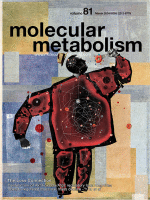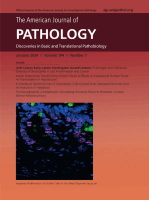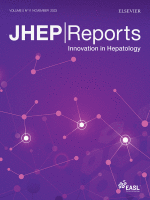

Razani lab




2024
2023
Zhang X, et al. Loss of Macrophage mTORC2 Drives Atherosclerosis via FoxO1 and IL-1β Signaling.
Jha V et al. A Critical Role for ERO1α in Arterial Thrombosis and Ischemic Stroke.
Collaborative Paper
Yeh YS, et al. Subcutaneous Transplantation of White Adipose Tissue.
Ozcan M et al. Sustained alternate-day fasting potentiates doxorubicin cardiotoxicity.
Collaborative Paper
Zhang X, et al. Use of acidic nanoparticles to rescue macrophage lysosomal dysfunction in atherosclerosis.
Taghrir MH, et al. Inequity and disparities mar existing global research evidence on Long COVID.
Collaborative Paper
2022
Park AC, et al. PCSK9 Pleiotropism: In the Same Vein as Statins.
Zhang X et al. Evaluation of mTORC1 signaling in mouse atherosclerotic macrophages by flow cytometry and immunofluorescence.
Arentoft A et al. HIV Antiretroviral Medication Neuropenetrance and Neurocognitive Outcomes in HIV+ Adults: A Review of the Literature Examining the Central Nervous System Penetration Effectiveness Score.
Collaborative Paper
Francis GA and Razani B. Autophagy in Atherosclerosis: Not All Foam Cells Are Created Equal.
Rusu I et al. Microbial signals, MyD88, and lymphotoxin drive TNF-independent intestinal epithelial tissue damage.
Collaborative Paper
Theofani E et al. TFEB signaling attenuates NLRP3-driven inflammatory responses in severe asthma.
Collaborative Paper
Li J et al. Neutrophil DREAM promotes neutrophil recruitment in vascular inflammation.
Collaborative Paper
Hosseinnezhad M et al. Green miles in dyeing technology: metal-rich pumpkin extracts in aid of natural dyes.
Collaborative Paper
Razani B et al. A comparative study of pathogen inactivation technologies in human platelet lysate and its optimal efficiency in human placenta-derived stem cells culture.
Collaborative Paper
2021
Collaborative Paper
Akbarialiabad H, et al. Long COVID, a comprehensive systematic scoping review.
Collaborative Paper
Jeong SJ, et al. Trehalose causes low-grade lysosomal stress to activate TFEB and the autophagy-lysosome biogenesis response.
Park AC, et al. Autophagy Signaling and Oxidative Stress in Thoracic Aortic Aneurysms: Good, Bad, or Ugly?
Zaman R, et al. Selective loss of resident macrophage-derived insulin-like growth factor-1 abolishes adaptive cardiac growth to stress.
Collaborative Paper
Collaborative Paper
Klionsky DJ, et al. Guidelines for the use and interpretation of assays for monitoring autophagy (4th edition)1.
Collaborative Paper
2020
Razani B, et al. Preserving immune homeostasis with A20.
Collaborative Paper
Dean JM, et al. MED19 Regulates Adipogenesis and Maintenance of White Adipose Tissue Mass by Mediating PPARγ-Dependent Gene Expression.
Collaborative Paper
Stitham J, et al. Inflammasomes: a preclinical assessment of targeting in atherosclerosis.
Li Y, et al. TFEB is a master regulator of tumor-associated macrophages in breast cancer.
Collaborative Paper
He A, et al. Acetyl-CoA Derived from Hepatic Peroxisomal β-Oxidation Inhibits Autophagy and Promotes Steatosis via mTORC1 Activation.
Collaborative Paper
Zhang X, et al. High-protein diets increase cardiovascular risk by activating macrophage mTOR to suppress mitophagy.
Galle-Treger L, et al. Autophagy is critical for group 2 innate lymphoid cell metabolic homeostasis and effector function.
Collaborative Paper
Razani B, et al. Non-catalytic ubiquitin binding by A20 prevents psoriatic arthritis-like disease and inflammation.
Collaborative Paper
2019
Evans TD, et al. TFEB drives PGC-1α expression in adipocytes to protect against diet-induced metabolic dysfunction.
Javaheri A, et al. TFEB activation in macrophages attenuates postmyocardial infarction ventricular dysfunction independently of ATG5-mediated autophagy.
Evans TD, et al. Functional Characterization of LIPA (Lysosomal Acid Lipase) Variants Associated With Coronary Artery Disease.
Jeong SJ, et al. p62/ SQSTM1 and Selective Autophagy in Cardiometabolic Diseases.
Park H, et al. Peroxisome-derived lipids regulate adipose thermogenesis by mediating cold-induced mitochondrial fission.
McGill JB, et al. Low dose chloroquine decreases insulin resistance in human metabolic syndrome but does not reduce carotid intima-media thickness.
Kalugotla G, et al. Frontline Science: Acyl-CoA synthetase 1 exacerbates lipotoxic inflammasome activation in primary macrophages.
Primeau T, et al. Assessment of Copper Nanoclusters for Accurate in Vivo Tumor Imaging and Potential for Translation.
Dick SA, et al. Self-renewing resident cardiac macrophages limit adverse remodeling following myocardial infarction.
2018
Weber KJ, et al. PPARγ Deficiency Suppresses the Release of IL-1β and IL-1α in Macrophages via a Type 1 IFN-Dependent Mechanism.
Zhang Y et al. TFEB-dependent induction of thermogenesis by the hepatocyte SLC2A inhibitor trehalose.
Zhang X, et al. Classical and alternative roles for autophagy in lipid metabolism.
Evans TD, et al. TFEB and trehalose drive the macrophage autophagy-lysosome system to protect against atherosclerosis.
2017
Clemente-Casares X, et al. A CD103+ Conventional Dendritic Cell Surveillance System Prevents Development of Overt Heart Failure during Subclinical Viral Myocarditis.
Zhang H, et al. CRISPR/Cas9-Mediated Gene Editing in Human iPSC-Derived Macrophage Reveals Lysosomal Acid Lipase Function in Human Macrophages-Brief Report.
Liu H, et al. Intermittent fasting preserves beta-cell mass in obesity-induced diabetes via the autophagy-lysosome pathway.
Mildenberger J, et al. N-3 PUFAs induce inflammatory tolerance by formation of KEAP1-containing SQSTM1/p62-bodies and activation of NFE2L2.
Fang L, et al. Transcriptional factor EB regulates macrophage polarization in the tumor microenvironment.
Sergin I, et al. Exploiting macrophage autophagy-lysosomal biogenesis as a therapy for atherosclerosis.
Block RC and Razani B. Linking lysosomal acid lipase insufficiency to the development of cryptogenic cirrhosis.
Lee Y, et al. Keap1/Cullin3 modulates p62/SQSTM1 activity via UBA domain ubiquitination.
Evans TD, et al. Target acquired: Selective autophagy in cardiometabolic disease.
Lanza GM, et al. Anti-angiogenic nanotherapy inhibits airway remodeling and hyper-responsiveness of dust mite triggered asthma in the Brown Norway rat.
2016
Evans TD, et al. Modulating oxysterol sensing to control macrophage apoptosis and atherosclerosis.
Block RC and Razani B. Options to consider when treating lysosomal acid lipase deficiency.
Leng S, et al. Ursolic acid enhances macropahge autophagy and attenuates atherogenesis.
Sergin I, et al. Inclusion bodies enriched for p62 and polyubiquitinated proteins in macrophages protect against atherosclerosis
2015
Sergin I, et al. Degradation and beyond: the macrophage lysosome as a nexus for nutrient sensing and processing in atherosclerosis
Razani B and Raines EW. Can the DNA damage response be harnessed to modulate atherosclerotic plaque phenotype?
2014
Sergin I, et al. Hypoxia in plaque macrophages: a new danger signal for interleukin-1b activation?
Emanuel R*, Sergin I*, et al. Induction of lysosomal biogenesis in atherosclerotic macrophages can rescue lipid-induced lysosomal dysfunction and downstream sequelae.
Sergin I, et al. Self-eating in the plaque: what macrophage autophagy reveals about atherosclerosis.
Epelman S, et al. Embryonic and adult-derived resident cardiac macrophages are maintained through distinct mechanisms at steady state and during inflammation.
2012
Lodhi I, et al. Inhibiting adipose tissue lipogenesis reprograms thermogenesis and PPARg activation to decrease diet-induced obesity.
Lei Y, et al. The mitochondrial proteins NLRX1 and TUFM form a complex that regulates type I interferon and autophagy.
Razani B, et al. Autophagy links inflammasomes to atherosclerotic progression


















































.jpg)























